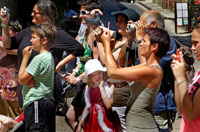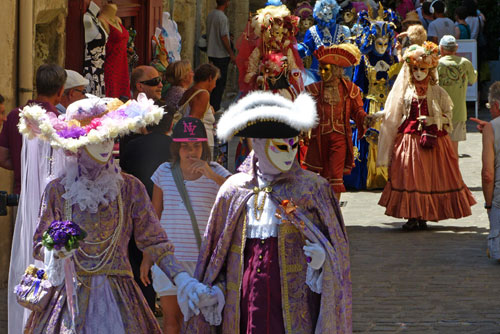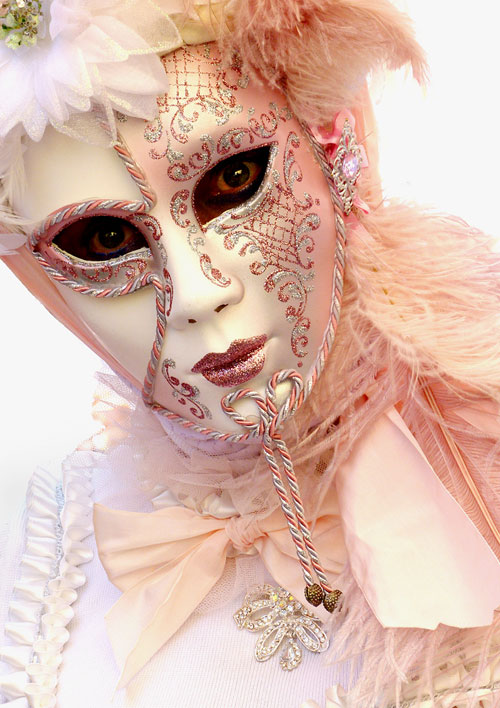Five Keywords for Better Photography
posted Friday, June 22, 2012 at 12:27 PM EST
 Are you frustrated with your images? Do you feel like your images have gotten repetitive? Are you visually tongue-tied? If you answer yes, then let me offer five keywords that can improve your photography.
Are you frustrated with your images? Do you feel like your images have gotten repetitive? Are you visually tongue-tied? If you answer yes, then let me offer five keywords that can improve your photography.
Despite protests to the contrary, all photography is about communicating something to someone. Whether it is a proud mom photographing her daughter’s first dance class or a retiree taking photos on a long dreamed of Alaskan cruise, they are all trying to communicate something.
And while some may say their pictures are just snapshots, they mean more. But like the folks standing in the crowd in the image (above right), it's easy to be lulled into herd behavior. Getting into the habit of mindlessly pointing and shooting and accepting mediocre results as the best you can do.
I'm here to tell you that you can do better and these five keywords can help make that difference.
They are: See, Observe, Think, Frame, and Aim.
It is my contention that these words -- more than a larger sensor, longer lens, or newer camera -- when applied to picture making, will produce a dynamic change in your images.
To explain how these five words work, I offer the following illustrative example.
I live in France and each year in the nearby 15th century town of Pézenas, there is a Molière Festival. A highlight of the festival is the parade through the town’s narrow, winding streets of dozens of masked and costumed characters.
This year when I arrived at the parade, I was unhappy with what was there to see. To put it mildly there was chaos in the streets.
The elaborately masked Renaissance figures casually paraded, seemingly without direction or purpose. They were surrounded by tourists; so much so that their gorgeous costumes were stuck amidst a sea of t-shirts, baseball hats and resort wear. This was frustrating as I wasn’t in the mood to shoot trite pictures contrasting sloppy tees with colorful mask and costumes.

On top of this, the bright Mediterranean sunlight sliced razor sharp through the streets, producing dark shadows and very bright highlight areas. Since I never use on-camera flash, which, for me, destroys the feeling of the ambient light, I was faced with a problem.
However, after seeing, I began to look deeper into the scene and observe what was there. The hurly-burly of the parade, its visual jumble was the issue. Observing the costumed figures, I realized that the eye sockets of the masks were very dark, you couldn't see people's eyes. This gave them a distant, unworldly, almost menacing appearance.
Observing this, I began to think about what I could do to get images that reflected what I was seeing and observing. I obviously needed to get very close to the performers.
So, I went up to one of the costumed women and asked her to stop and let me take a picture. Usually at an event like this, if you ask people politely to pose, they are happy to do so. Looking at her mask, I framed an image in my imagination.
Ansel Adams called this framing an image in one’s mind, "pre-visualization." It is a fundamental of photography and a great opportunity for a photographer to use their imagination to make a photograph. I would go so far as to say that the best photographers always see pictures in their minds before they take them.
I turned the woman so her face was in shadow and the bright blue sky behind her. Then I fiddled with camera stuff like choosing a focal length for my zoom (100mm) and setting my Exposure Compensation to +1 stop.
The mask and costume were very light and I knew that the camera's autoexposure system would have turned the whites to gray. Overexposing the image would insure that the mask would be light and that the very bright sky would blow out, leaving the figure framed against white. It would create the “high-key” image I was looking for.
Finally, I lifted the camera to my eye and aimed it to match the framed image I had in mind. Only then, did I hit the shutter release and get the shot I wanted.

While this sounds like lots to do before taking a picture, let me assure you that what I described -- from first seeing the parade to taking the photo -- took only a few seconds in real time.
That quickness is the result of practice, which just might be a sixth keyword to keep in mind.